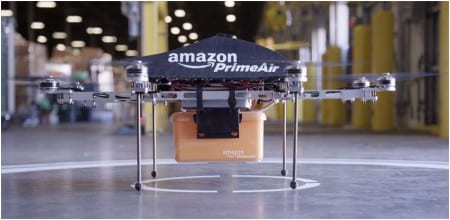Amazon.com, Inc. (NASDAQ:AMZN) has identified plans for airspace across the US catering wholly to commercial drones. Unmanned aerial vehicles (UAV) have gone beyond consumers and enthusiasts. Organizations such as Amazon and Google Inc (NASDAQ:GOOGL) are experimenting with drones.
The idea of using drones in enterprises is coming closer to reality. They are used for a variety of purposes such as delivery, surveillance, and others. The proliferation of drones has heightened safety concerns.
There have been a number of instances when drones have nearly collided with commercial aircraft. These incidents have called for severe restrictions on UAV flight and imprisonment for breaking rules related to UAVs.
According to Amazon, a way to address this problem is to allocate UAVs their segment of airspace. The firm plans to divide US airspace into different segments for different kinds of drones. This includes a high-speed transit zone between 200 and 400 feet above ground level for drones flying at the speed of 60 knots or more.
As per the plan, a buffer between 400 and 500 feet would avoid the problem of drones hitting commercial fleets and manned vehicles. Hence, airplanes would be forced to fly above 500 feet.
In Amazon’s version, the drones it and other organizations harness will be highly sophisticated, safe, and independent. The company has identified five features mandatory to drones in the special zones. These include a sophisticated GPS that monitors the location of other drones in real-time, a dependable Internet connection, online flight planning to broadcast the drone’s path, communications equipment, and sensor-based sense- and-avoid equipment to avoid colliding with other drones and obstacles.
The zones between 200 and 400 feet would be allocated for a type of drone highway. UAVs in this range would mostly be traveling independently at great speeds. As the result, drones will need to have the capacity to communicate with each other, and also be armed with standardized sense-and-avoid features. The latter will empower them to evade vehicles and potential hazards such as flying birds and tall buildings.
Sources: zdnet, forbes, fortune









